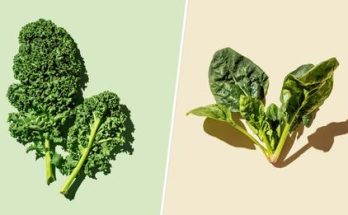With seasonal options including pumpkin, squash, pomegranates, pears and plenty more, there are many delicious healthy options in the store. Not to mention seasonal foods taste better and are more accessible and affordable.
These 10 foods not only add nutrition to your plate, but they are ideal for cozy fall dishes, like soups, roasted veggies, casseroles, baked goods and even breakfast favorites, like oatmeal and smoothies.
What is the healthiest fall food?
Pomegranates
This vibrant fall fruit is rich with nutrients including fiber, vitamin C, vitamin K and folate. But, most notably, pomegranates contain polyphenols, or inflammation-fighting plant compounds that have been extensively studied for their health benefits.
Research links eating pomegranate arils (seeds) and drinking pomegranate juice with reductions in obesity, diabetes, cardiovascular diseases and even some cancer types.
Add pomegranates to morning oatmeal or yogurt or toss them with roasted veggies for a simple side dish.
Other healthy fall foods
Seek out these dietitian-approved healthy autumnal foods in your supermarket or at a local farmer’s market.
Apples
Not only is apple picking a fun fall activity, but eating apples is good for your health. This fall favorite has countless varieties and is chock full of nutrition. One apple is a good source of fiber and vitamin C, so eat them at snacktime or include them in sweet and savory dishes to boost digestion and immunity this fall.
Pumpkin
Even though you may start seeing pumpkin-spiced treats in August, pumpkin is a fall fruit. Loaded with beta-carotene, a precursor to vitamin A, pumpkin is good for your eyes and helps fight inflammation.
Canned pumpkin puree is a convenient food for making soups, baked goods, oatmeal, smoothies and the like. If you prefer to roast a whole pumpkin, scoop out the seeds, rinse them and add them to the baking pan for a healthy high-protein snack.
Winter squash
There are many varieties of winter squash, like butternut, delicata, acorn, spaghetti, kabocha, honeynut. Each has a unique flavor and texture, but they all contain fiber, vitamin A, vitamin C, potassium, magnesium and carotenoids, otherwise known as beneficial plant compounds.
Orange foods contain nutrients that are beneficial to eye health. As a matter of fact, winter squash has lutein and zeaxanthin, two compounds that have been shown to delay the progression of eye diseases, like age-related macular degeneration (AMD) and cataracts.
Cranberries
Cranberries are a staple at every Thanksgiving table. In their purest form, cranberries are very tart and full of vitamin C, fiber and antioxidants. Research links eating cranberries to improved heart health, and drinking cranberry juice reduces the risk of urinary tract infections.
Cranberries are very sour, so they are often cooked down with sugar. If you eat cranberries regularly, take note of your added sugar consumption.
Mushrooms
Mushrooms grow year-round, but their earthy flavor and meaty texture scream “fall.” They are often used in fall dishes, like soup or meatloaf. Mushrooms are the only vegetable that contain vitamin D, an important nutrient for bone health that is difficult to get from the diet. Since vitamin D is fat-soluble, cooking mushrooms in a fat, like olive oil, enhances the absorption of the vitamin.
Pears
Pears are not only versatile and succulently sweet, they are my top pick for high-fiber fruit. Each pear contains 20% of the daily value of fiber, which is helpful since most people don’t meet their daily needs. Make sure you eat the skin, since that’s where the fiber lives.
Brussels sprouts
Brussels sprouts are soaring in popularity. This small cabbage is packed with fiber and vitamin C, to keep your digestive and immune system healthy through the cold months. Brussels sprouts are easy to roast and add as a side dish, or they can be the star of the show in a pasta dish.
Cauliflower
With vitamin C, fiber, magnesium and other nutrients, cauliflower is the cruciferous veggie that you should be eating this fall. It has a “meaty” texture, so you may see cauliflower as the stand-in for wings or steak in vegetarian cooking.
Parsnips
Parsnips are the sweeter alternative to carrots. These white starchy root veggies are full of nutrients, like fiber, potassium and vitamins C and E. Puree parsnips into a sweet mash, roast them in the oven, or add them to baked goods (hello parsnip banana bread) for moisture and sweetness.
Persimmons
Depending on where you live, you may never encounter a persimmon in the store. But if you’re lucky enough to try this tomato look-alike, you’ll enjoy sweet and juicy flavor.
Persimmons have a small window of seasonality in the fall, so embrace it to get a dose of vitamin A and C.
Sweet potato
Like other orange foods, sweet potatoes are a vitamin A powerhouse. They also contain fiber, potassium, magnesium and vitamin C. Many athletes fuel their workouts with potatoes, since they are a starchy veggie that provides energy for exercise.
Whether you enjoy them mashed, roasted or as fries, sweet potatoes are an inexpensive and delicious veggie side.



